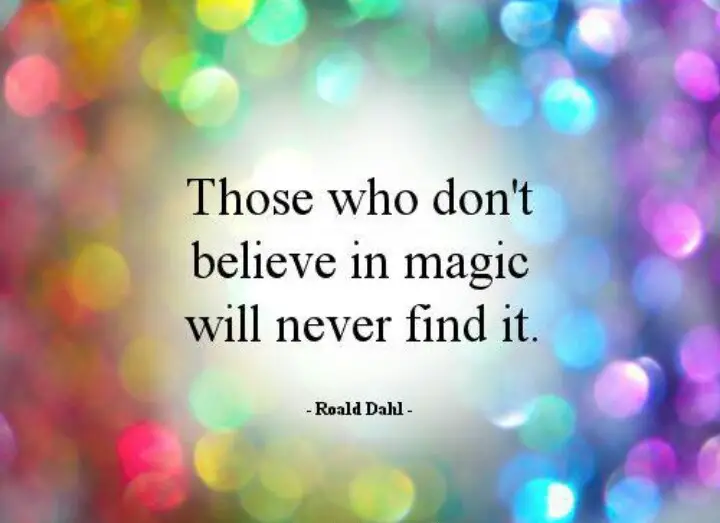Contributing writer for Wake Up World
The origins of Santa Clause go way back to about 300 AD, when St Nicholas, a wandering monk, became known for his kindness and generosity. The humble monk toured the countryside giving away his fortune to help the poor. Over the years versions, in a variety of incarnations, have been popular in different European cultures. However, the version that most are familiar with today was popularized in America in the 1800s. Stripped of all religious associations, the generous, kind figure became closely associated with Christmas shopping. Like a god of consumerism, children in many Western countries write to the imaginary, bearded, all-seeing elder requesting the material possessions they most desire. Based on their behaviour, ostensibly kept on detailed lists, Santa decides whether the child has been ‘nice’ enough to deserve the presents they requested.
The majority of people with whom I have spoken about the topic of Santa Clause view the custom as a harmless bit of fun that brings an element of light-hearted magic to childhood. They have warm memories of the role Santa played in their formative years, and have playfully adopted the same tradition with their own children. The experience, however, isn’t always positive; there are some negative aspects to this tradition that I feel warrant discussion.
Trust
The first issue is one of trust. When I was a toddler I asked my father if Santa Clause was real. He answered truthfully. From that point, the man in the red suit was still a fun part of our Christmas celebrations, but I knew that he was not an actual guy who flew around the planet in a sled delivering presents. Later, when I was older, my father explained that the reason that he had been so honest about Santa was because when he was a child he had believed wholeheartedly in the story fed to him by his parents. When he eventually discovered that he had been deceived by those in whom he had invested his complete faith, he was devastated. In adulthood, I met others who had similar experiences with the Santa Clause phenomenon. Like my father, these people had also been wounded by the fact that that felt they had been lied to by those closest to them — an effect known as The Santa Claus Syndrome.
Control
“He sees you when you’re sleeping. He knows when you’re awake. He knows if you’ve been bad or good. So be good for goodness sake!” ~ Santa Clause is Coming to Town
Another negative slant to the Santa story is the way he is frequently used as a means to control children’s’ behaviour. While using a fictional, omniscient character to command obedience in children can be a relatively effective tool in the short term, it does nothing to ultimately build trust and connection, which I see as the heart of good parenting, in the long term. It also teaches children to associate their behaviour with material rewards and punishments.
Injustice
A further point, connected to the last one, that struck me when I queried people about their experiences of Santa was that some, who had grown up in poverty, told me that they had felt betrayed by Santa. The reason they felt this way was because, despite the fact they had tried their best to be good all year in hopes that Santa would reward them with their dream present, they were frequently disappointed. Then, to make matters worse, they saw kids from wealthy families, who they knew had been really naughty, enjoying extravagant gifts allegedly brought to them by Santa. This unfair situation left these children feeling like there was something innately wrong with them and acted to erode their sense of self-worth.
Disposable Magic
“Santa is our culture’s only mythic figure truly believed in by a large percentage of the population. It’s a fact that most of the true believers are under eight years old, and that’s a pity.” ~ Chris Van Allsburg
When I began contemplating the tradition from a sociological perspective, it occurred to me that there was another aspect that I rarely saw discussed. As a society we wholeheartedly support and encourage the childhood belief in magic. However, as a young person approaches adolescence, a crucial part of the coming of age process is accepting that magic is not real; we are taught that it is just a silly, whimsical belief that needs to be left behind in childhood. All the enchantment and imaginary components of reality are relegated to the realm of worthless nonsense not suited for those who have matured, and Santa is often the very catalyst that instigates the shift from one belief system to another.
Concepts like energy, mind power and intuition are consigned to the realm of fantasy by those who adopt a purely pragmatic perspective. Because this perspective is mainstream in the West, most of us are indoctrinated into it as we move into adulthood. For those more naturally inclined to engage with the subtler aspects of being, this can have the crippling effect of making us doubt or second guess our natural inclinations. As we move away from the old childhood belief system it can be natural want to stifle or suppress our connection to the subtler levels of being. Who wants to be the kid that still believes in Santa and magic, when all their peers have moved on?
For me, intuition, imagination and subtle energy add an extra dimension to reality. They act to infuse our world with a level of enchantment that makes our experience of it richer, more meaningful and more dynamic. They are a part of what I call real magic. A necessary key to being able to perceive these subtleties is a belief that they are real and possible. Unfortunately when a belief in Santa Clause is exposed as a false belief many simultaneously throw out faith in all aspects that don’t fit into a concrete adult world view and thus the ability to experience real magic is hindered.
“Having in our childhood felt primal awe for the spectacle of the holiday, we are told to age into feeling sullen and resentful. You are supposed to proclaim Santa dead like preadolescent Nietzsches and decry the whole month as an orgy of crass commercialism.” ~ Thomm Quackenbush, A Creature Was Stirring
Ultimately, I am not suggesting that it is wrong, or consistently harmful to indulge in the Santa tradition. But I think that the more awareness we bring to the topic the better. I believe everyone would benefit from increased contemplation of this topic and the deeper narrative we are sharing with our children through the perpetuation of this tradition. Perhaps it is time that we reassess the values we emphasise through this tradition, or possibly it is time to introduce some new stories and rituals, not necessarily to replace the Santa Tradition, but to balance out its stark commercial nature.
Jump Into The Blue
A book by author Christina Lavers
Divine Magic or Madness? Heroine or Fool?
Jump Into The Blue is a breathtakingly beautiful, at times disquieting, and occasionally terrifying journey to the outer reaches of reality. Moving from the grungy streets of Montreal, to Mayan Pyramids, Rainbow Gatherings, and ultimately to the far reaches of reality, Jump Into The Blue is a multidimensional story, told authentically from the heart, in which the author challenges her readers to evaluate their own understanding of reality.
With nuggets of wisdom and unique spiritual insight, this wild, enchanting journey, detailing incredible highs and terrifying lows, is sure to fascinate anyone interested in the deeper aspects of life.
Jump Into The Blue is available here on Amazon.
For more information, check out www.jumpintotheblue.com and Facebook/Jump Into The Blue.
About the author:
Christina Lavers is a writer, an artist, a creative enthusiast, and an inner world explorer. Born in Montreal Quebec, Canada, she now lives with her life partner and son in a rainforest pocket in the hills behind Coffs Harbour, NSW Australia. She spends her time playing, creating, growing and sharing.
Christina is devoted to assisting people to find and connect with their own creative magical current that flows deep within. She is now offering a comprehensive e-course designed to help people light up their world with passion and creativity. You can access Section One here for free!
Christina has also recently published her first full length book, a memoir about her wild awakening journey entitled Jump Into the Blue, and she is currently working on the next one.
“My journey has been about personal alchemy… exploring the mysteries of my soul and my environment, and learning to bring all aspects, the light and the dark, together with the transcending ingredient… love. The more I uncover and nurture the wounded aspects of my being, the more whole and grounded I feel and the more my outer world reflects the love, wonder and magic I have discovered inside”.
You can follow Christina’s work at:
- www.crystalalchemyarts.com.au
- www.mysticalchemyarts.com
- www.facebook.com/mysticalchemyarts
- www.jumpintotheblue.com
- www.facebook/Jump Into The Blue
Recommended articles by Christina Lavers:
- Are You a Bridge Between Two Worlds?
- Addictive Behavior Related to Low Levels of Oxytocin, the “Love/Bonding Hormone”
- 10 Signs You’ve Bought ‘Spin’
- New Study Shows Regular Contact with Nature Reduces Crime, Increases Social Cohesion
- Sugar is as Addictive as Cocaine – Here’s How You Can Kick the Habit
- Research Shows Just 7 Minutes of Meditation Can Reduce Racial Prejudice
- Taking Care of Our Inner Tribes – Microflora, Awakening and You
- Groundbreaking Study Maps the Decline of Wild Bee Communities in the United States
- Taking Responsibility For Our Energy
- More Evidence That TV is Dumbing Us Down
- Synchrony and Exertion of Dancing Found to Encourage Social Bonding, Raise Pain Threshold
- Quitting Smoking? Try These Herbs, Tips and Incentives to Help You Succeed!
- 5 Things I Learned From Having a Chronic Illness

If you've found value in our articles, we invite you to support the release of our brand-new book, "Gratitude Practices for Kids: A Practical Guide for Adults to Instill a Spirit of Appreciation and Positivity in the Next Generation."
"Gratitude Practices for Kids" brings together over 25 innovative and accessible practices designed to enhance gratitude in everyday life. This comprehensive guide is backed by 17 scientific studies, ensuring each concept is grounded in research, underscoring our commitment to nurturing growth, emotional intelligence, and positive interactions between adults and children.
We encourage you to opt for the paperback version to celebrate this new release. Dive into its fresh pages away from digital distractions, allowing you to immerse yourself in the transformative practices it offers.
Over recent years, Wake Up World has faced significant online censorship, which has impacted our financial ability to operate. Moving into book publishing represents a strategic step to secure the ongoing funds needed to continue our mission. By purchasing Gratitude for Kids, you help us keep our content free and accessible to everyone, avoiding needing a paywall. With over 8,500 articles published in the last 13 years, we remain dedicated to keeping our valuable content open to all.












